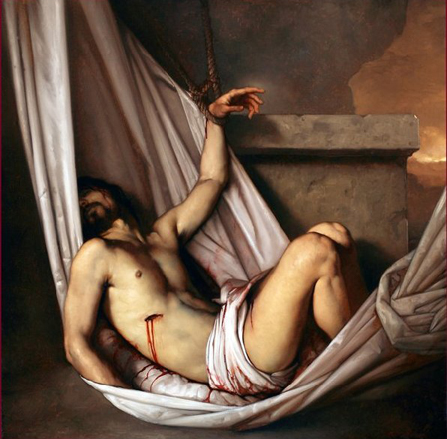on the twelfth day of christmas, my true lovelast entry – christmas 2013
prologue-1 – italy 2014
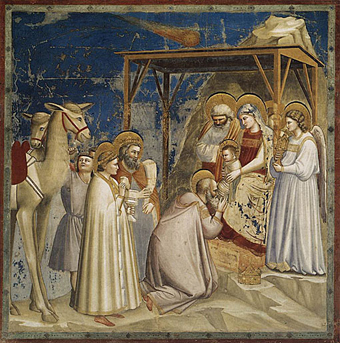 The impetus for this entry is the magical word twelfth. I can’t spell it, because I have no understanding of how you combine a t, a w, an e, an l, an f, another t and an h into a word. What were them Middle Englishers thinking? And yet I love the contortions the tongue has to perform in order to make the sound. It comes out like an incantation.
The impetus for this entry is the magical word twelfth. I can’t spell it, because I have no understanding of how you combine a t, a w, an e, an l, an f, another t and an h into a word. What were them Middle Englishers thinking? And yet I love the contortions the tongue has to perform in order to make the sound. It comes out like an incantation.
Not to be outdone by them 14th century peoples, I’ve assembled my own contradictions from highfalutin Shakespeare (the post title), and Giotto (the image), to the low-brow Twelve Days of Christmas (the entry title). While using the Catholic feast of the Epiphany to tie them all together.
The pic is Giotto’s Adoration of the Magi. (Giotto’s frescoes remind me of American primitive paintings.) With camels and gifts the three kings have followed the comet – the brown ball at the top of the image – to the stable at Bethlehem. In the fresco, this stable seem to be the end of the road. The oldest king has taken off his crown and kneels before the child. All present watch except for the camel driver who prefers to attend to his animals. (He’s my favorite character in this Medieval pageant.)
The 2013 Christmas season is done. And good riddance. I am so glad to be nowhere near northern Michigan; to not hear anymore carols, holiday greetings, birthday wishes or questions about retirement.
Yesterday, I went over to Rick-and-Sarah’s and we booked our flights to Italy for August.
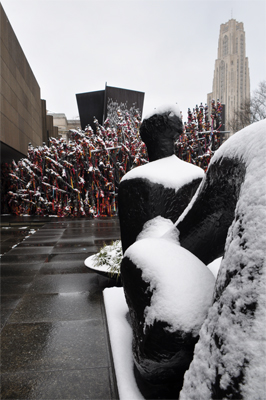
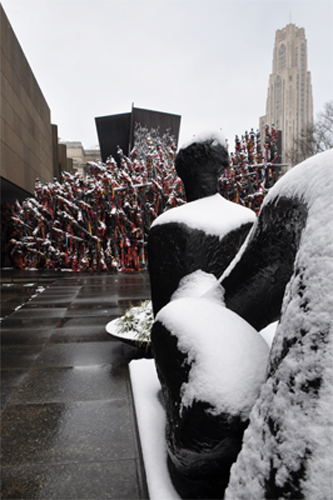 (moore) Reclining Figure, (barlow) Tip, (serra) Carnegie, (left) Scaife Wing, (right) Cathedral of Learning – University of Pittsburgh.
(moore) Reclining Figure, (barlow) Tip, (serra) Carnegie, (left) Scaife Wing, (right) Cathedral of Learning – University of Pittsburgh.
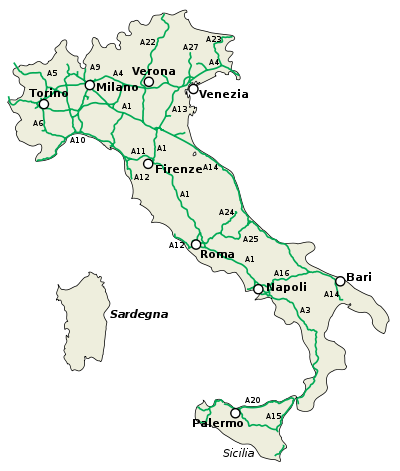
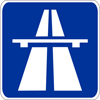 I’m hoping we can spend a couple of hours in Reggio; the lungomare is phenomenal. The second week, we’re in Belmonte Calabro for the first half and Naples for the second. We’re driving the A3 between Reggio and Calabro. We will visit with my relatives in Aprigliano and Pietrafitta and go to Pompeii when in Naples.
I’m hoping we can spend a couple of hours in Reggio; the lungomare is phenomenal. The second week, we’re in Belmonte Calabro for the first half and Naples for the second. We’re driving the A3 between Reggio and Calabro. We will visit with my relatives in Aprigliano and Pietrafitta and go to Pompeii when in Naples.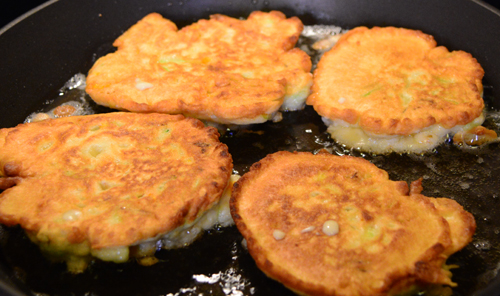
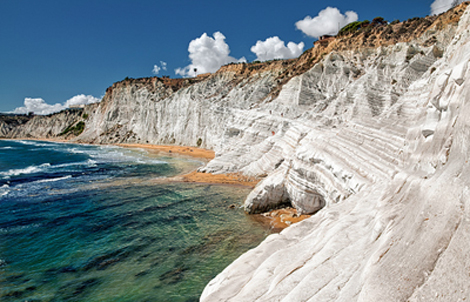
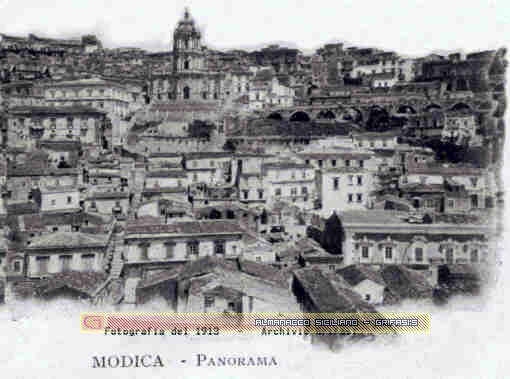
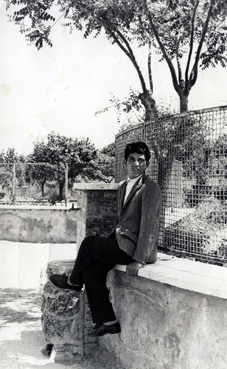
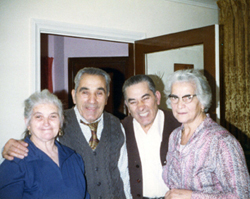 I believe that on the Zinga side of the family there is a genetic abnormality that has resulted in number of children with disabilities. My grandfather Nunziatu and my uncle Luigi, his older brother, both had mentally retarded children. My uncle Luigi’s son made it through immigration. He grew up in Canada; was never able to live on his own, but he was an active member of the family attending all Zinga family events. I don’t know enough about my uncle Mario to know how severe his disability is. However, it’s also true that other Zinga parents had very bright children; both ends of the spectrum are represented in the extended family.
I believe that on the Zinga side of the family there is a genetic abnormality that has resulted in number of children with disabilities. My grandfather Nunziatu and my uncle Luigi, his older brother, both had mentally retarded children. My uncle Luigi’s son made it through immigration. He grew up in Canada; was never able to live on his own, but he was an active member of the family attending all Zinga family events. I don’t know enough about my uncle Mario to know how severe his disability is. However, it’s also true that other Zinga parents had very bright children; both ends of the spectrum are represented in the extended family. 
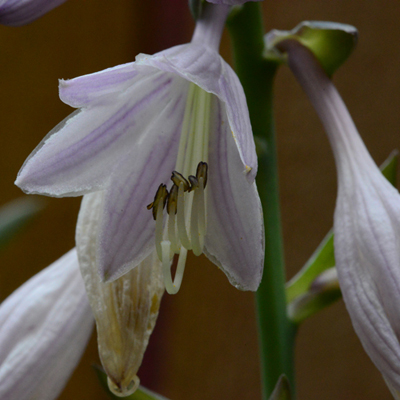 The image on the left is the result of shooting a Hosta flower at close range with a tripod. The soft brown background is the wooded fence. And all I did to the image is crop it into a square; no other Photoshop tweaks. I really like the images from this lens. The stamens are almost impossible to see with the naked eye and yet with the micro lens their black caps center the focus. (Most of the images in the slide-show, in the header, were shot with this same lens.)
The image on the left is the result of shooting a Hosta flower at close range with a tripod. The soft brown background is the wooded fence. And all I did to the image is crop it into a square; no other Photoshop tweaks. I really like the images from this lens. The stamens are almost impossible to see with the naked eye and yet with the micro lens their black caps center the focus. (Most of the images in the slide-show, in the header, were shot with this same lens.)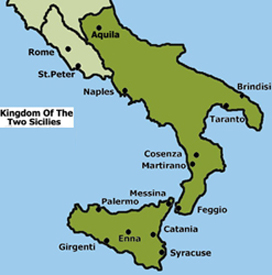 Federico was one of the most powerful Holy Roman Emperors of the Middle Ages. His political and cultural ambitions, based in Sicily, stretched through Italy to Germany and even to Jerusalem. His brilliant court which blended Norman, Arabic and Jewish elements was housed in Palermo. Also, in 1234, Federico founded the University of Naples, the first state university in western Europe.
Federico was one of the most powerful Holy Roman Emperors of the Middle Ages. His political and cultural ambitions, based in Sicily, stretched through Italy to Germany and even to Jerusalem. His brilliant court which blended Norman, Arabic and Jewish elements was housed in Palermo. Also, in 1234, Federico founded the University of Naples, the first state university in western Europe. 
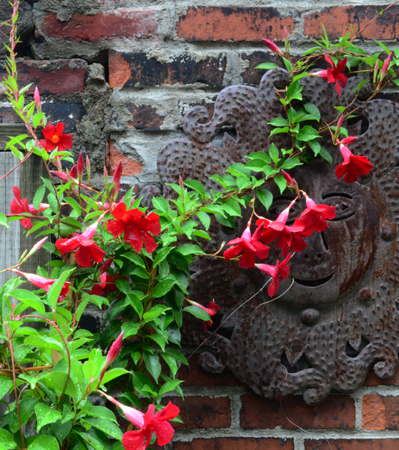
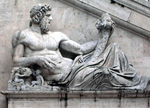 (In the image on the left, the face reminds me of the relief of the Tiber god on the Campidoglio steps – above image. According to legend, the god’s hair represents the river.)
(In the image on the left, the face reminds me of the relief of the Tiber god on the Campidoglio steps – above image. According to legend, the god’s hair represents the river.) 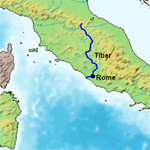 The river begins in the Apennines in Emilia-Romagna, flows south for 252 miles and empties into the Mediterranean south-west of Rome. In the 1930s, Mussolini placed an antique marble column at its source. The inscription reads
The river begins in the Apennines in Emilia-Romagna, flows south for 252 miles and empties into the Mediterranean south-west of Rome. In the 1930s, Mussolini placed an antique marble column at its source. The inscription reads 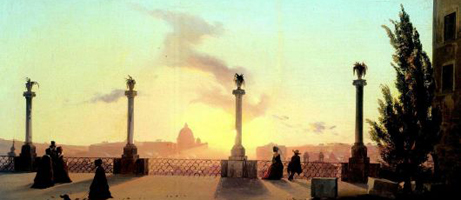

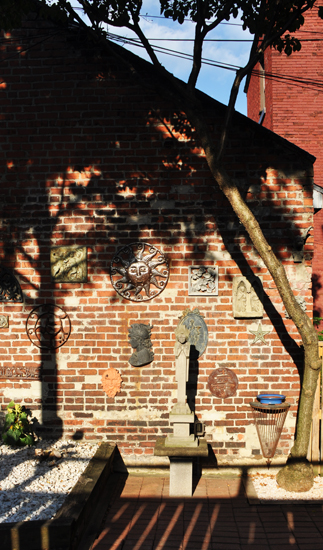

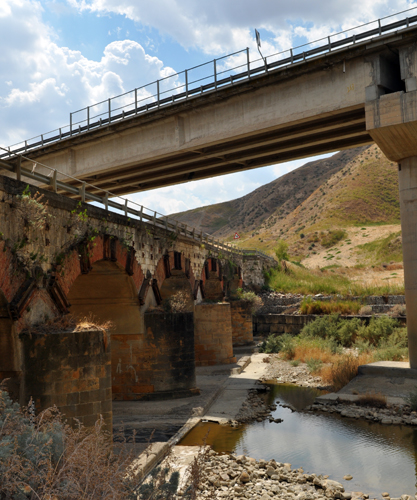
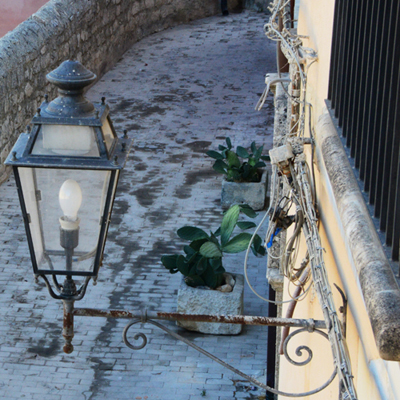



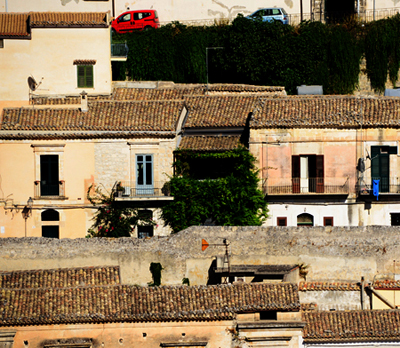
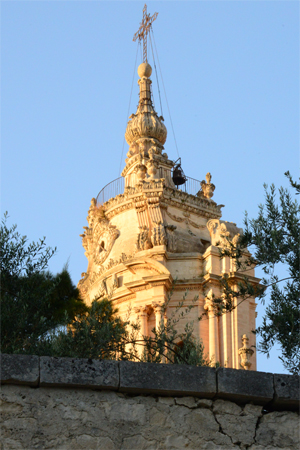

 Siracusa so much that we decided to go back again today. We drove and parked in
Siracusa so much that we decided to go back again today. We drove and parked in 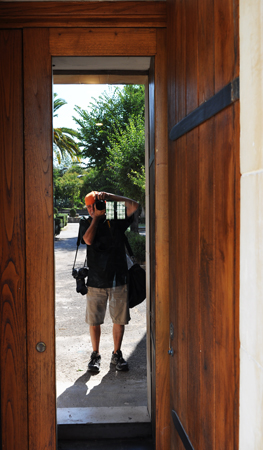
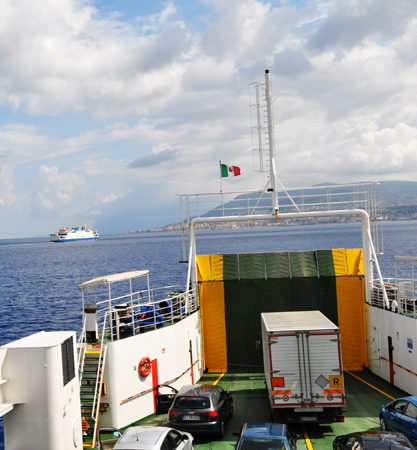
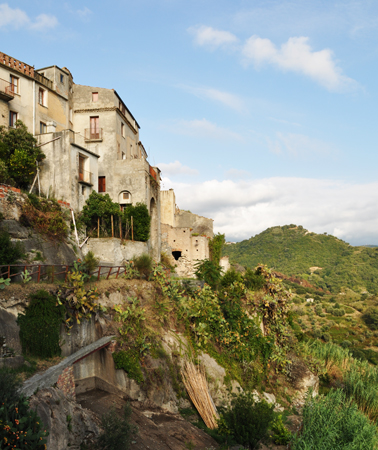

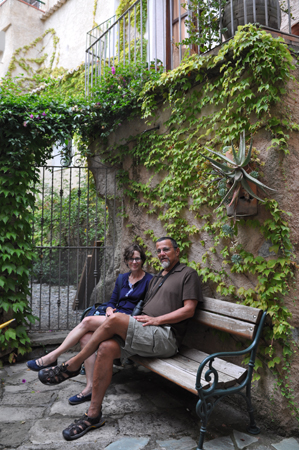
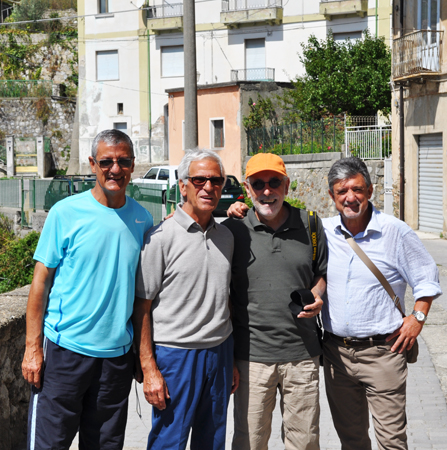
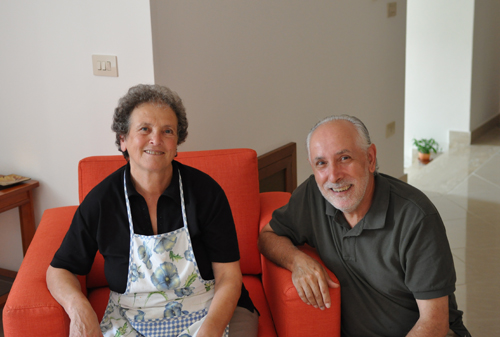
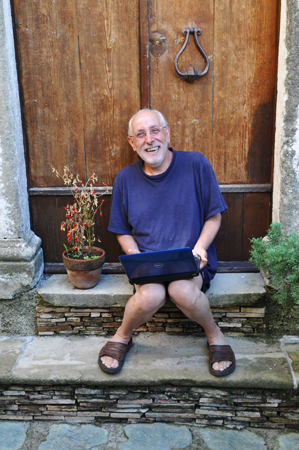
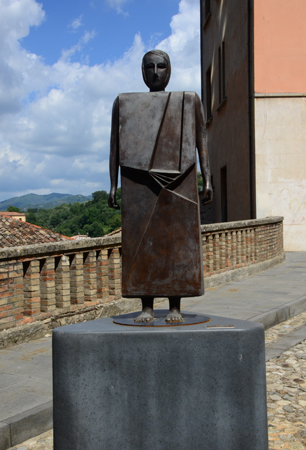
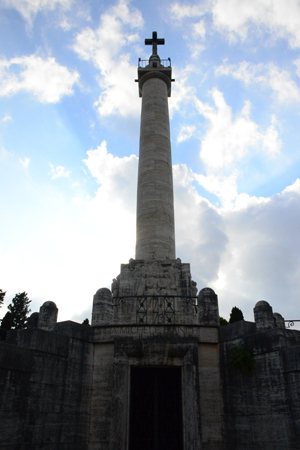
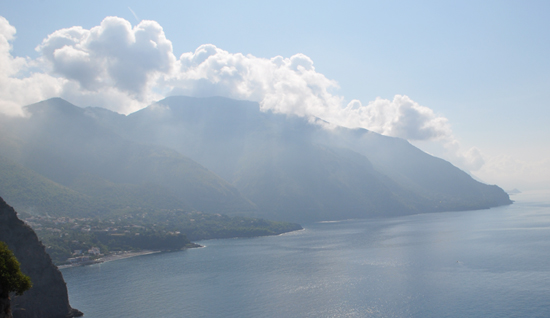
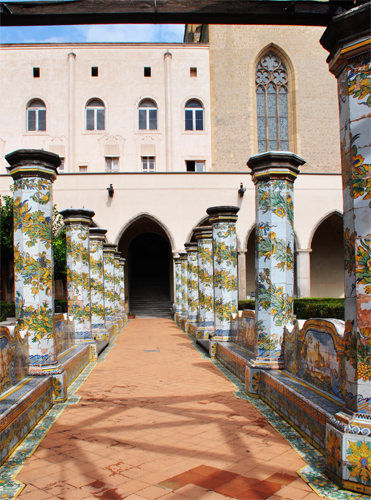
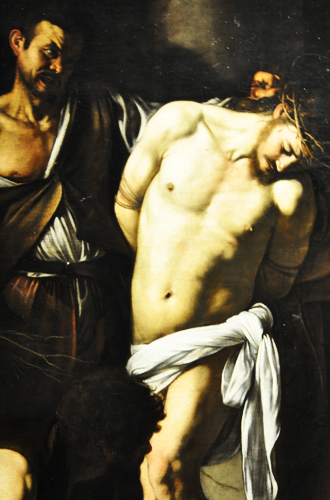
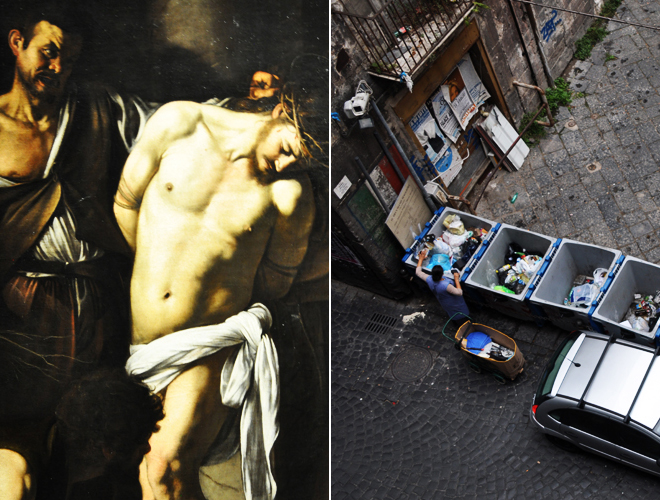
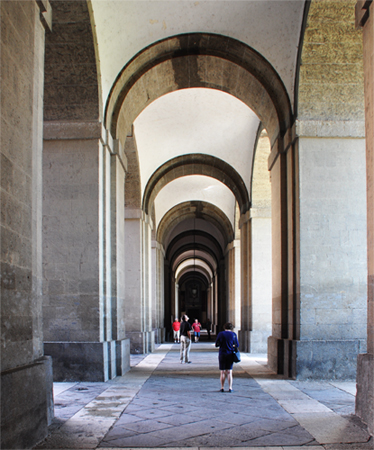
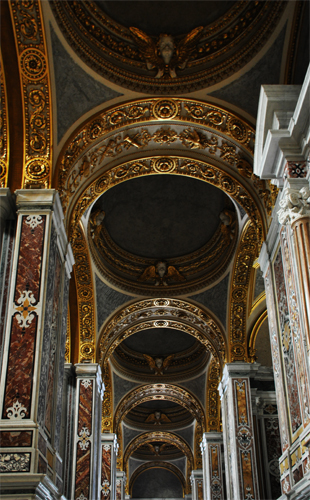

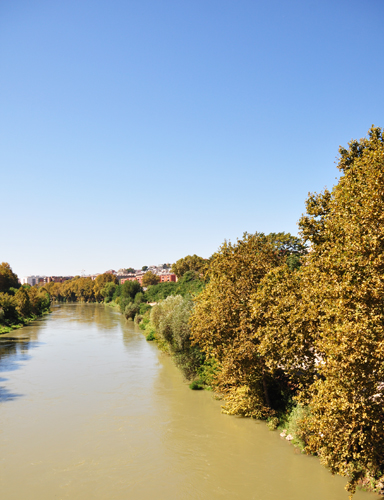
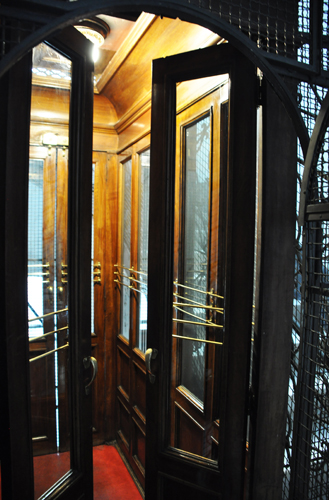 I thought I’d write about the great apartment we in. (The image on the left is one of two elevators in the building. An Otis turn-of-the-century treasure that runs perfectly well.) When I made the four reservations for the accommodations, the one I had the least information about was the apartment in Rome. The original reservation was for a wonderful three-floor apartment in the Jewish quarter, but the owner – Rodolfo – had to cancel, because they were going to repair the roof and drain-spouts in his apartment building. I asked him to recommend something and he sent me to his niece who managed an apartment in
I thought I’d write about the great apartment we in. (The image on the left is one of two elevators in the building. An Otis turn-of-the-century treasure that runs perfectly well.) When I made the four reservations for the accommodations, the one I had the least information about was the apartment in Rome. The original reservation was for a wonderful three-floor apartment in the Jewish quarter, but the owner – Rodolfo – had to cancel, because they were going to repair the roof and drain-spouts in his apartment building. I asked him to recommend something and he sent me to his niece who managed an apartment in 
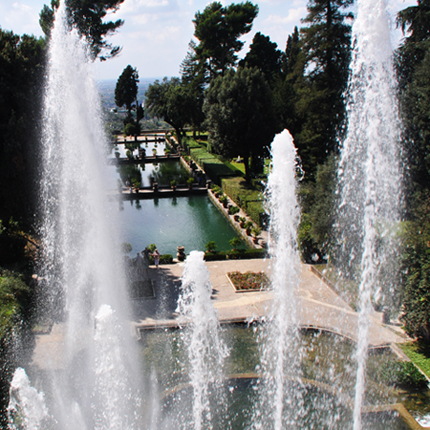

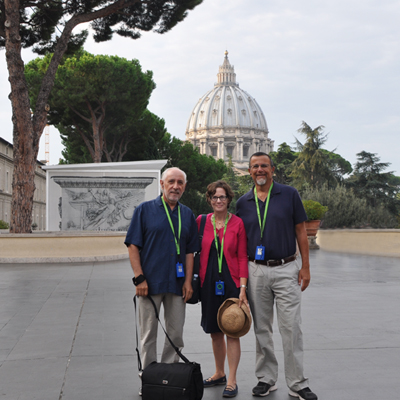
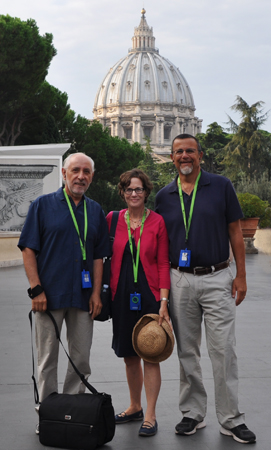 This morning we went to the Vatican for a guided tour. As part of the package, we got in before the mobs and were able to be in the Sistine Chapel with a smaller group.
This morning we went to the Vatican for a guided tour. As part of the package, we got in before the mobs and were able to be in the Sistine Chapel with a smaller group.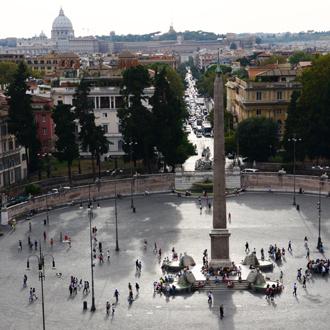
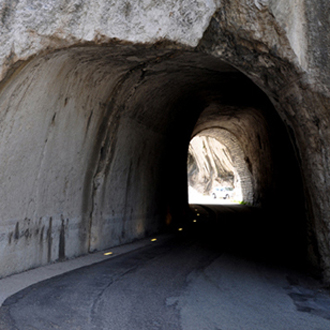
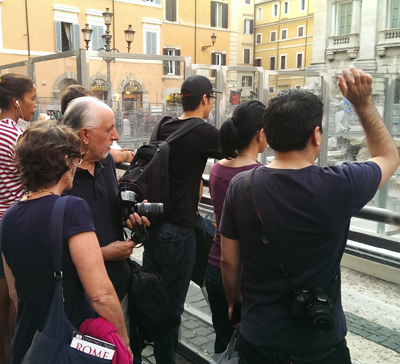
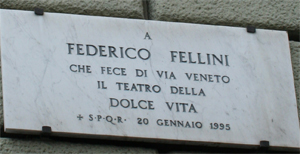 It reads To Federico Fellini who made the
It reads To Federico Fellini who made the 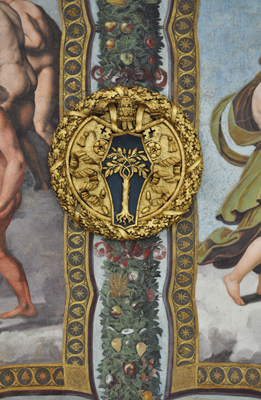
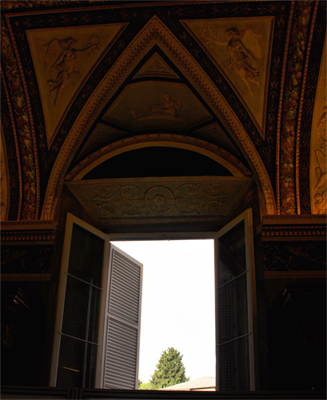
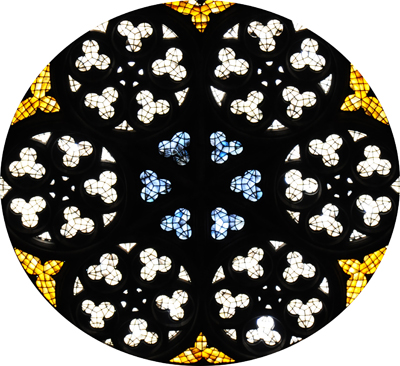
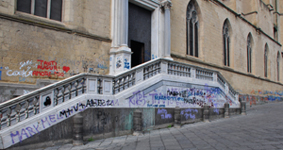 The chapel and the whole complex was a great example of an
The chapel and the whole complex was a great example of an 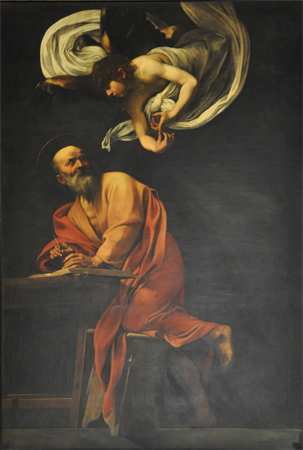
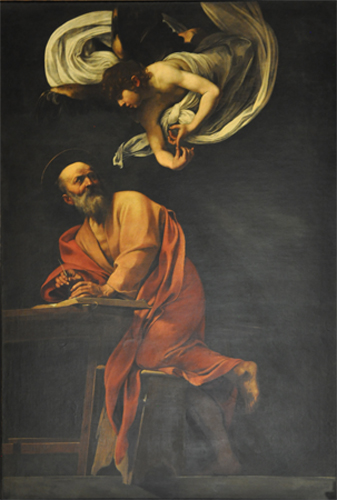 In Ortigia, a neighborhood of Siracusa, we saw our first Caravaggio –
In Ortigia, a neighborhood of Siracusa, we saw our first Caravaggio – 